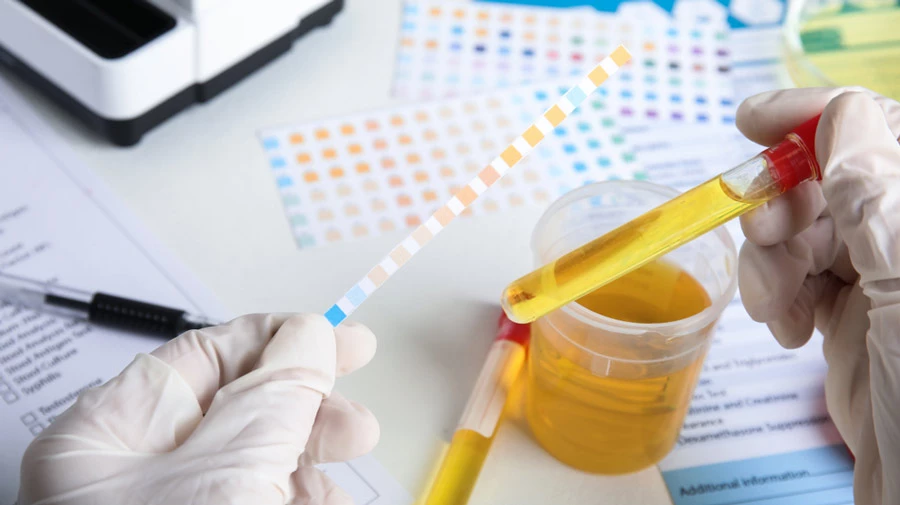Understanding Percocet Withdrawals and Effective Treatment
You may ask yourself if you have been using this prescription drug: How long does Percocet stay in your system? Perhaps your doctor prescribed this prescription medication for you for moderate to severe pain. You may become addicted to it without realizing it – at least not until it’s too late. You are not alone in struggling with an opioid painkiller.
Many others struggle with prescription drug abuse. It can feel like a storm coming in from the Pacific – overwhelming and isolating. Knowing you can find a safe harbor is a comfort if you or a loved one is currently in Percocet addiction. Just as every storm has its calm, every challenge has its solution.
Percocet is a pain reliever doctors prescribe for patients needing relief. That’s also where things sometimes get tricky. Its misuse can lead to a hamster wheel of dependence and addiction.
South Shores Recovery is a sanctuary – here is where your healing begins. Our purpose? To restore lives interrupted by drug addiction.
Read on to learn more about this addictive painkiller, and how to get effective help at South Shores now!
What Is Percocet?
Percocet is more than just a name on a prescription bottle. It’s a powerful combination of two active ingredients that can combat moderate to severe pain.
Understanding how long Percocet stays in your system is not just a matter of scientific curiosity. Instead, it’s a brave first step to regaining control. You can find safety and prevent potential health risks only when understanding it.
The Chemical Composition and Purpose of Percocet
Percocet combines the opioid oxycodone with the analgesic acetaminophen. Does that ingredient name sound familiar? It should! It’s the active ingredient in Tylenol – an over-the-counter pain remedy. But this prescription blend relieves those suffering from chronic pain.
Doctors often prescribe it for short-term use after surgery or an injury. They might also issue it for treating chronic pain. The opioid component is oxycodone. It alters how the brain and nervous system perceive pain. The acetaminophen ramps up its effects and offers even more pain relief.
The Double-Edged Sword of Prescription Pain Relievers
While Percocet serves a noble purpose in pain management, it’s not without risks. Like many prescription medications, its benefits come along with a few pitfalls. Percocet can be a lifeline to treat pain when someone uses it as prescribed.
However, addiction treatment centers that treat Percocet know the truth. Abused prescription medications can become a problem. They can lead to dependence and addiction. The properties that make this drug excellent for treating severe pain – its ability to alter brain function and provide a sense of euphoria – can also make it a target for misuse.
Why Opioid Abuse Is a Growing Concern
The misuse of prescription and recreational opioids has increased dramatically over the past decade. SAMHSA lists opioids among the most abused prescription medications. Abusing Percocet can lead to physical dependence. That’s when the body becomes accustomed to the drug and requires it to function normally.
This dependence can be present in various ways. Some report intense cravings and physical symptoms when they stop taking the prescription.
Besides that, abusing Percocet increases the risk of serious health risks. These include liver damage from acetaminophen overdose and potentially deadly respiratory issues.
How Percocet Works in the Body
Percocet travels through the body and its pathways from the moment someone takes it. It’s worth understanding how it moves through the body to numb pain.
Absorption and Distribution
Once ingested, Percocet moves into the bloodstream right away. The opioid component, oxycodone, begins binding to the opioid receptors. This binding process alters pain perception, and it provides much-needed relief.
While the oxycodone goes through the body, the acetaminophen component works its analgesic magic, further enhancing the pain-relieving effects.
Metabolism: The Liver’s Main Function
The liver plays a key role in how your body breaks down Percocet. The liver metabolizes Percocet – oxycodone and acetaminophen. It breaks them down into smaller parts – or metabolites.
Prolonged or excessive use of Percocet generally strains the liver. That stems from the presence of acetaminophen. It might even cause organ failure. This risk shows the importance of adhering to prescription drugs to the letter. It’s also why you should be honest about anything other illicit drugs you have taken when you discuss your addiction with your doctor.
Kidney Function and How Long Percocet Stays in Your System
After metabolism, the kidneys excrete the broken-down Percocet and eliminate it in the urine. Kidney function plays a large role in answering the question of how long does Percocet stay in your system. Several factors can influence the rate at which Percocet is eliminated.
These factors include age, hydration levels, and overall kidney health.
Storage of Oxycodone in Your Body’s Fatty Tissues
Remnants of oxycodone may make their way into the body’s fatty tissues. This storage can lead to a prolonged presence of the drug in the system. That happens especially in cases of chronic use or higher dosages.
Defining Half-Life When it Comes to Drugs
In pharmacology, the half-life of a drug refers to the time it takes for the concentration of that drug in the bloodstream to reduce by half. So, if you take Percocet, this window helps answer your question of how long does Percocet stay in your system.
The Half-Life Period of Percocet
The term “half-life” might take you back to high school chemistry class. But when it comes to Percocet, understanding the drug’s half-life is key. It provides insight into the drug’s duration in the body. It also aids professionals in gauging dosage intervals, potential interactions, and more.
Understanding that half a dose and half-life are not the same for someone facing substance abuse. A misunderstanding could lead to a potentially life-threatening overdose.
Percocet’s Half-Life: A Closer Look
Percocet has a relatively short half-life. On average, the half-life of oxycodone range is about four to six hours. That means that within this timeframe, half of the oxycodone component of Percocet would exit the bloodstream. Acetaminophen has a similar average half-life, so both components work together.
The Implications of the Percocet Half-Life
Understanding how you metabolize Percocet helps answer the question how long does Percocet stay in your system.
- Dosage Intervals: Knowing the half-life helps healthcare professionals determine appropriate intervals between doses. Doctors can offer pain relief without risking overdose.
- Drug Tests That Detect Percocet: This measurement determines if the drug appears in drug tests, especially urine tests. However, it’s essential to remember that tests to detect Percocet can vary due to several factors. We will explore those in the next section.
- Risk of Accumulation: Understanding the half-life can help prevent drug accumulation in the system for those taking Percocet for a long time. Why is this information important? Easy! Too much might lead to adverse effects.
Detection Windows: How Long Does Percocet Stay in Your System?
Understanding how long Percocet can appear in the body is critical for those facing an employment drug test or medical evaluation. While the average half-life gives us an idea, the actual detection window comes from several factors and the type of advanced drug screenings the employer uses.
- A urine test is the most frequent drug testing method. Most urine tests can detect Percocet 2-4 days after the last dose. However, this window fluctuates. It depends on the frequency of Percocet use, dosage, and individual metabolism.
- Hair follicle tests can detect drug use over a more extended period. Hair follicles can reveal opioid use for 90 days. While not as commonly used as urine tests, this drug test provides a more extended detection window for substances like Percocet.
- Blood tests can detect this painkiller in the bloodstream for up to 24 hours after the last dose. However, blood tests are invasive and are less commonly used for routine drug screenings.
- Saliva tests can detect this drug for 1-2 days after consumption.
How much Percocet one person can take does not predict how much Percocet someone else can take. It all depends on the Percocet half-life, which your metabolism can influence.
Factors Influencing Detection Windows for Percocet
Several factors can influence how long Percocet remains in the system:
- Higher doses of Percocet remain detectable for longer periods.
- Frequent use can lead to the drug accumulation in the system. Thus, it may increase the detection window.
- Individual metabolic rates can influence how quickly your body processes the painkiller.
- Hydration levels might also affect urine concentration. This factor may impact detection times. In addition, some foods and diets speed up drug metabolism.
- Kidney and liver function are essential to processing Percocet. This factor can influence detection times. Those with compromised liver or kidney function might exhibit extended detection windows.
Understanding the detection windows for Percocet is crucial for anyone watching for potential drug interactions or Percocet overdose.
The Many Risks and Consequences of Percocet Abuse
Yes, Percocet offers effective pain relief. But, it’s essential to approach it with a keen awareness. Misuse of this prescription medication can lead to many health complications.
As mentioned earlier, these can also be life-threatening.
How Does Drug Use Progress into Addiction?
One of the most significant risks is prescribed Percocet dependence. Over time, the body may come to rely on the drug to function normally. This dependence can manifest in various ways:
- Intense Drug Cravings: Some people might find themselves constantly thinking about the drug or going to great lengths to obtain more.
- Withdrawal Symptoms: Some might experience a range of physical withdrawal symptoms if they miss a dose. These range from mood swings and sleep disturbances to breathing problems..
- Liver Function: Because this drug contains acetaminophen, prolonged or excessive use can strain the liver. It may also reduce both liver and kidney function. In the worst cases, it can cause complete liver failure.
- Respiratory Depression: Prescription opioids, including the oxycodone in Percocet, can slow down breathing rates. High doses can lead to respiratory failure. It’s potentially a fatal condition.
- Accidental Overdose: Taking more than the prescribed dose or combining Percocet with other drugs or alcohol can cause an overdose. Symptoms might include extreme drowsiness, slow heartbeat, cold or clammy skin, and difficulty breathing.
- Mood Swings: Some experience depression when taking Percocet. They go from euphoria when on the drug to depression or anxiety when it wears off.
- Impaired Judgment: Prolonged use can affect cognitive functions. It could lead to poor decision-making and risky behaviors.
- Additional Drug Use: After the doctors stop the prescription medication, some turn to other opiates, like Fentanyl to ease severe pain. Street opioids can have deadly consequences.
Prescription opioids are as dangerous as street drugs. If you have these signs of opioid addiction, it’s time to get help for your drug use.
The Social and Economic Impact of Opioid Addiction
Beyond the physical and mental toll, Percocet consumption can strain personal relationships and impact job performance. It may also cause financial difficulties. The cycle of seeking, using, and recovering from the drug can become all-consuming. It overtakes other crucial aspects of life for some who struggle.
Treatment for Percocet Addiction
Overcoming Percocet addiction can be daunting. But recovery is not just possible – it’s within reach. With the proper support, resources, and determination, you can heal.
The first step towards recovery is acknowledging the drug abuse problem.
5 Key Signs of Percocet Abuse or Addiction
Here are five key indicators suggesting that Percocet use is becoming problematic. If you see these behaviors, it’s time to get professional medical advice to quit, and to consider attending our Percocet detox program as the start of getting reliable support to quit.
- Taking more Percocet than prescribed or for longer durations.
- Experiencing intense cravings for the drug.
- Neglecting responsibilities at home, work, or school.
- Withdrawing from social or recreational activities.
- Engaging in risky behaviors to obtain the drug.
Continued Percocet addiction leads to ever-increasing doses. In time, you increase the chances of a Percocet overdose. You stop caring about how long does Percocet stay in your system and become reckless.
Addiction Treatment Programs at South Shores Recovery
At South Shores Recovery, we understand Percocet addiction’s many challenges. Our approach is holistic, compassionate, and tailored to the unique needs of each individual:
- Medical detox will eliminate Percocet from the system. You will be under the supervision of our team to manage your Percocet withdrawal symptoms.
- Medication-assisted treatment (MAT) reduces withdrawal symptoms and cravings. After medication-assisted treatment, you’ll be on the way to therapy and counseling.
- Engaging in individual, group, and family therapy sessions to address the root causes of addiction, develop coping strategies, and build a support system. Methods may include cognitive behavioral therapy or dialectal behavior therapy.
- Recognizing that many who struggle with Percocet addiction also face mental health challenges, our dual diagnosis approach treats both substance abuse and co-occurring disorders.
Recovery is an ongoing journey. We provide aftercare resources. These include support groups and counseling to ensure long-term success.
Get Proven Options for Percocet Treatment at South Shores
If you or a loved one is navigating the challenges of Percocet addiction treatment, remember that the journey to recovery begins with a single step. Reach out to us at South Shores Recovery. Let us be your guiding light, your anchor in the storm. Together, we’ll restore your wellness. You deserve to experience the joys of life.
Your well-being is our main priority. Contact South Shores Recovery today to begin your Percocet treatment support now!






